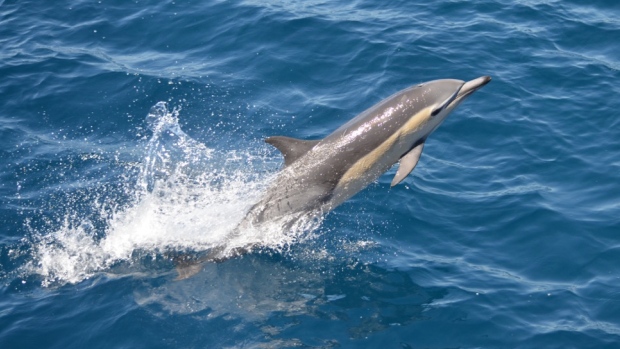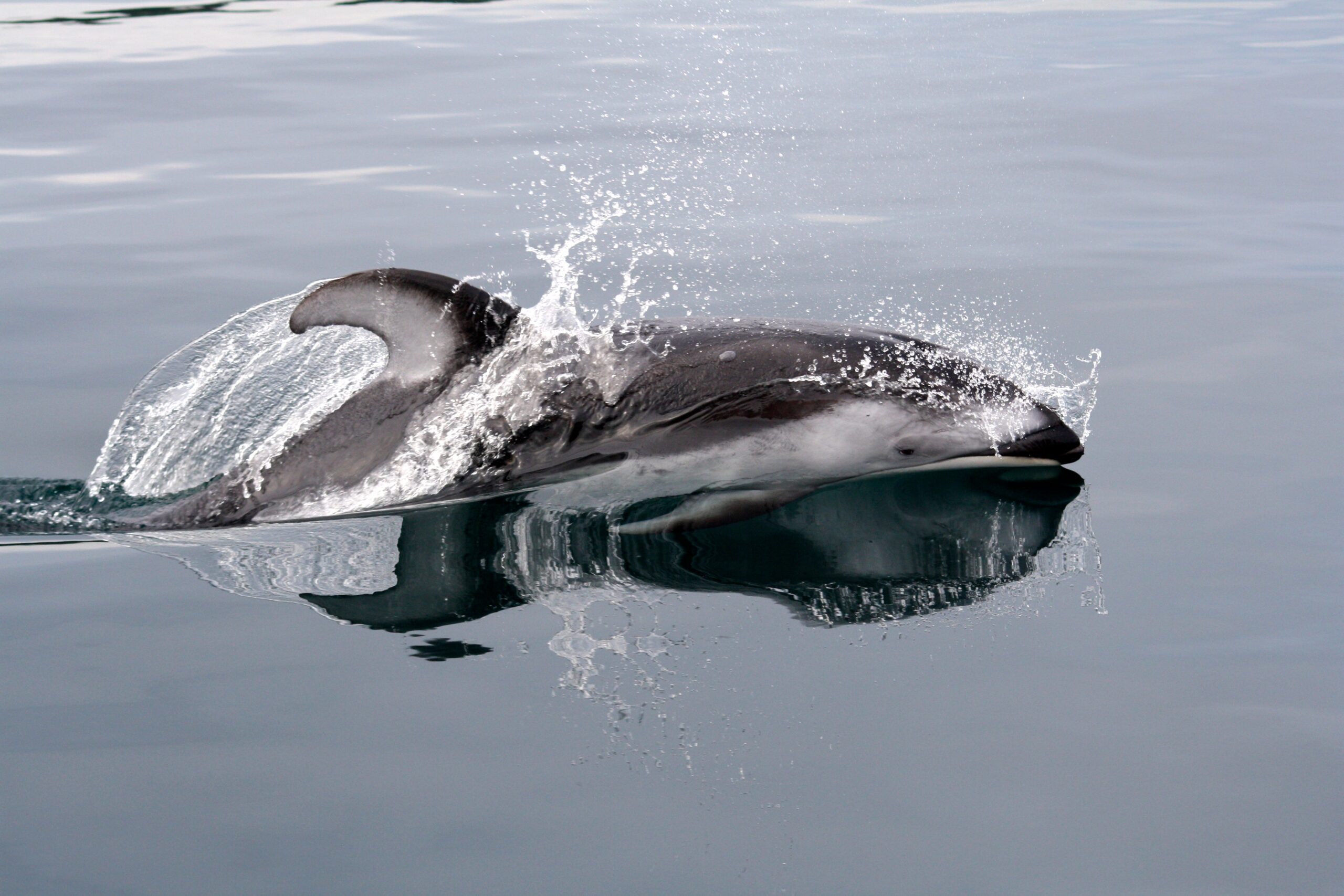
One of the best things about studying and watching whales is that you are never tempted to think you’ve seen everything. The ocean will always surprise you – as well it should. We know more about the surface of the moon, as they say, than about the bottom of our oceans. Whales and other marine mammals give us a glance at what may be going on under there, by the mere coincidence that they visit our surface world to breathe. By studying the behaviour of marine mammals for those brief minutes they spend available to our senses, we collect tiny little puzzle pieces describing the state of our oceans. While these pieces rarely form a whole picture, they can sometimes hint at what the finished puzzle might be.
Recently, captains and naturalists in the Salish Sea whale watching fleet were excited at the news that a pod of short-beaked common dolphins (Delphinus delphis) had been spotted in our area. These dolphins are common in the eastern tropical Pacific, and can be found in the Atlantic and Indian oceans as well. While they sometimes venture into temperate waters, short-beaked common dolphins are rarely spotted in the colder waters of the Arctic or Southern oceans. This may be the first recorded sighting of this species in the Salish Sea, where the water temperature hovers at a cool 9-11 degrees Celsius (48-52 degrees Fahrenheit). Funnily enough, this is not the first out-of- place sighting that has been reported this year in our area: in January, the Vancouver Aquarium helped rehabilitate a very chilly sub-tropical green sea turtle that washed ashore on the west coast of Vancouver Island. Last summer, a fin whale (Balaenoptera physalus) spent a couple of weeks in northern Puget Sound, which is the first live sighting of such a large whale species in inland waters for a decade or more.
Although these rare sightings can be a treat for whale watchers and scientists alike, these little puzzle pieces are beginning to paint an alarming picture. Marine animals that are outside their normal range are often a cause for concern, because it means that they are leaving their comfort zone. This can be due to illness or confusion, which is often accompanied by stranding, or it can mean that they are being forced to go farther afield in search of food. A recent El Niño event resulted in warmer ocean temperatures in the eastern Pacific over the last two or three years, which led to large toxic algae blooms and lower spawning rate for prey fish. This can cause marine mammals, which are very mobile creatures, to search outside their comfort zone for prey. While a single sighting of common dolphins may not be cause for alarm, this increasing trend of warmer-water species venturing north may point to larger issues, including global climate change. While the effects of climate change on the oceans are difficult to predict, these marine mammal puzzle pieces can be helpful in understanding changes that are occurring all the way up the food chain.
The common dolphins that were seen in the Salish Sea last week have not been sighted since, but we will be keeping our eyes out! Common dolphins are medium-sized dolphins, anywhere from 5-8 feet (1.5-2.5 meters) long at maturity. They have a colour pattern of dark grey backs with white on their underside, and an hourglass-shaped patch of yellowish-grey on their sides. They prey on small fish that can be found in our waters such as herring, hake, sardines and pilchard, as well as squid and octopus. They are some of the fastest dolphins in the world, with a top travelling speed of 60 km/hour (37 miles/hour), and they like to bow- and wake-ride behind boats and even large whales! While they can travel in pods of up to thousands of individuals, the group spotted last week was described as a ‘small group’.
This is not to say that all dolphin sightings in the Salish Sea are unusual. Pacific white-sided dolphins are a temperate-water species that are seen once or twice a year in the waters around Victoria. Whale watchers often slangily refer to these playful and acrobatic animals as ‘Lags’, as a short form for their Latin name (Lagenorhynchus obliquidens). Pacific white-sided dolphins are common offshore in large pods, but sometimes visit our inland waters in smaller groups. They are a delight to watch, and we hope to have an experience with these local visitors this summer season. As for the short-beaked common dolphins, we wish them a safe and speedy return to their warm water home.
~
Kat Nikolich, MSc
Onboard Naturalist/Biologist for SpringTide Whale Watching & Eco Tours

